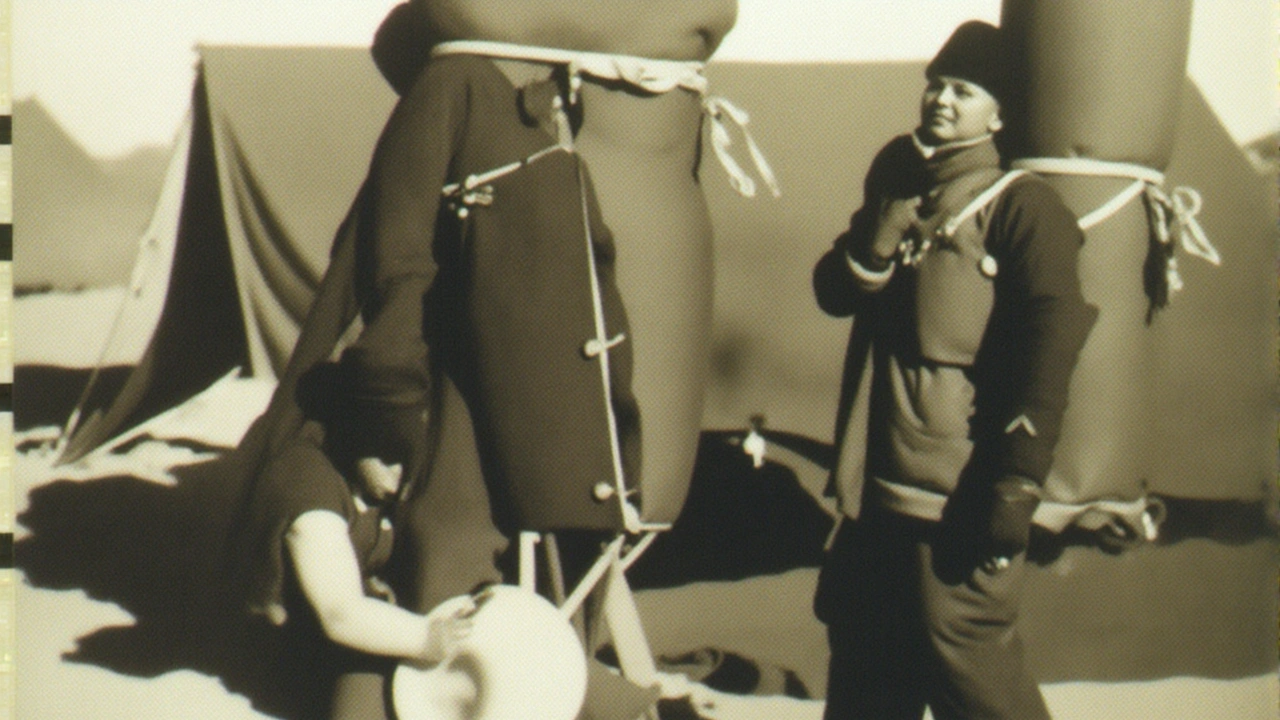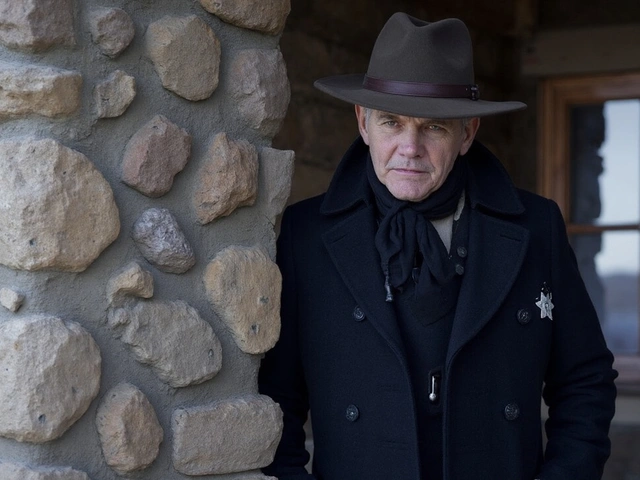A Stunning Discovery Brings New Light to An Old Mystery
The icy expanses of Mount Everest have long held secrets buried beneath layers of snow and ice, capturing the imagination of climbers and historians alike. One such secret that has tantalized mountaineers for nearly a century is the fate of Andrew Irvine and George Mallory. These two British climbers embarked on what might have been the first ever successful ascent of Mount Everest in 1924. However, their journey was met with tragedy; they vanished, leaving the world to wonder whether they had conquered the mighty peak before disaster struck.
In a remarkable development, a National Geographic documentary team might have stumbled upon the answer. During an expedition across the Central Rongbuk Glacier, beneath the daunting north face of Everest, the team discovered human remains. These were not ordinary remains; they contained a boot with a foot and a sock bearing a red label embroidered with the name 'A.C. IRVINE.' The possibility that these remains belong to the illustrious climber Andrew Irvine has sent ripples through the mountaineering community, potentially reshaping our understanding of that historic expedition.
Could This Solve One of Climbing's Enduring Mysteries?
Andrew Irvine and George Mallory’s expedition in 1924 was a landmark event in the lore of Everest attempts. The two men disappeared after being last sighted on June 8, 1924, at a height where success seemed within reach but was intercepted by the harsh reality of Everest's hostile conditions. The question has lingered: Did they succeed where others had yet to tread, or did they fall short of the summit, their goal elusive, their achievement unrecorded?
The new findings give Irvine’s relatives and mountaineering enthusiasts a glimmer of hope. According to Julie Summers, Irvine’s great-niece, the discovery not only offers an emotional closure to the family but also speaks volumes about the possible outcome of that fateful climb. For many, the real prize lies in finding Irvine's vest camera, which reportedly accompanied him on the climb. This camera, if recovered and intact, could hold photographic evidence that might reveal the true endpoint of Mallory and Irvine's expedition, as some have held the belief that they did indeed summit Everest before succumbing to the mountain’s treachery on their descent.
Impact of Climate Change on Everest's Icy Secrets
On a broader scale, this discovery touches on the changing environment on Mount Everest and how it affects exploration and historical investigations. As climate change continues to melt snow and ice in the Himalayan regions, it uncovers more than just rocks—it unveils parts of history frozen for decades. The chilling revelation is that over 300 climbers who have perished on Everest since the early 20th century may now become more visible as global temperatures climb, adding to the gravity of discussions surrounding climate change.
This ongoing exposure could help answer unresolved questions from past expeditions, yet it also underscores the urgency of environmental action, highlighting the delicate balance between adventure and responsibility. The melting ice serves as both an opportunity and a dire reminder—an opportunity to retrieve and respect the past, but also a pressing reminder of our present climatic predicament.
The Next Steps in Confirming the Identity
In a collaborative spirit of scientific and familial involvement, the process to identify the human remains is underway. DNA samples collected onsite are pivotal to discerning the truth, and members of Irvine’s family have graciously offered their DNA to help confirm the identity. Led by the well-known photographer and director, Jimmy Chin, the search and verification process underscores the dedication and meticulous attention to details required in such historic investigations.
While the wait for conclusive DNA results continues, there is an optimistic air within the tight-knit community of historians and climbers who view this as an unprecedented chance to finally close a fabled chapter in mountaineering history. Such findings have the potential to invigorate fresh dialogues, renew interest in mountaineering heritage, and inspire future generations to explore but also to respect the services provided by nature’s atmosphere.
A New Chapter in Mountaineering Narratives
The story of Andrew Irvine and George Mallory was always compelling—a daring duo lost to the mountain they longed to conquer. Now, newfound evidence implies that their historic fate might still hold one last tale to tell. As exploration gears into higher tech, implementations akin to those used by the National Geographic team will likely keep invigorating historical research. These technological innovations bring stories from frozen tombs back into the air of living discourse, redefining how the mystery of human adventure intertwines with the vastness of the earth’s breathtaking landscapes.
In a place where the heavens touch the Earth, and scales of ice and rock seem endless, one truth emerges eternal: the human spirit of exploration remains indomitable, driven, and beautifully relentless.






Write a comment